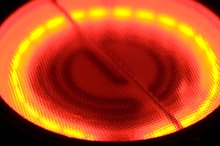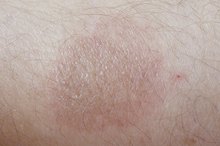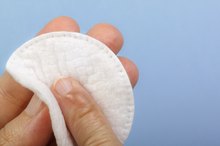How to Treat Muffler Burns
A hot muffler pipe from a motorcycle or other vehicle can burn skin. Burns are rated first degree, second degree or third degree depending on the level of tissue damage. Home treatment is often sufficient for many first-degree or second-degree muffler burns; however, more severe burns may require medical treatment. Each year, over 1 million Americans get medical attention for burns and over 50,000 are hospitalized for those injuries, according to the University of Maryland Medical Center 1.
If you are experiencing serious medical symptoms, seek emergency treatment immediately.
Look at the burned area to determine the severity. Redness, mild swelling and pain are signs of a first-degree burn. A second-degree burn has more swelling and pain along with blisters.
How to Treat a Kitchen Burn
Learn More
Measure the area of the burn. A minor burn is less than 3 inches in diameter and does not go deeper than the first layers of skin. If the muffler burn is more severe than this, do not treat it yourself but seek medical attention. Burns on the face, hands, groin, buttocks or feet also require medical care, as do burns on the elbows or knees, according to Case Western Reserve University 12.
Hold the burned area under cold running water, or immerse it in cold water to cool down the skin. Applying wet compresses of clean, soft material is another way to cool the burned area. Cool for approximately 15 minutes.
How to Treat a Burn on the Fingers
Learn More
Apply aloe gel or lotion, an antibiotic ointment or a gentle moisturizer to the burned area, being careful not to disturb the skin. This will soothe the skin and prevent it from drying out.
Cover the burn with a sterile adhesive bandage or gauze pad. Apply medical tape to secure the gauze. The dressing will protect the area from further damage or infection.
Take an over-the-counter pain reliever, such as aspirin, acetaminophen or ibuprofen, to reduce the pain and swelling. Read the instructions carefully for dosage information.
Change the gauze or bandage regularly to check for infection. Signs of infection include increased pain or swelling, fever, ongoing drainage, swollen lymph nodes or an area that does not heal. If you see these symptoms, seek medical help.
Warnings
Do not apply ice, butter or any kind of oil to burned skin. Don’t break open any blisters. If they break on their own, clean the area gently with soap and water, apply an antibiotic ointment, then cover with a sterile dressing. Change the dressing daily. For severe burns, seek medical attention promptly.
Related Articles
References
- University of Maryland Medical Center: Burns
- Case Western Reserve University: Burns
- American Academy of Dermatology Association. How to Treat a First-degree, Minor Burn.
- Cleveland Clinic. Burns. Updated August 31, 2017.
- Agrawal A, Raibagkar SC, Vora HJ. Friction burns: epidemiology and prevention. Ann Burns Fire Disasters. 2008;21(1):3–6.
- Shahrokhi S, Jindal K, Jeschke MG.Three Components of Education in Burn Care: Surgical Education, Inter-professional Education, and Mentorship.Burns. 2012;38(6):783-789.doi:10.1016/j.burns.2012.01.012.
Warnings
- Do not apply ice, butter or any kind of oil to burned skin.
- Don’t break open any blisters. If they break on their own, clean the area gently with soap and water, apply an antibiotic ointment, then cover with a sterile dressing. Change the dressing daily.
- For severe burns, seek medical attention promptly.
Writer Bio
Kay Penster has been writing professionally since the 1980s. She has worked in print, radio, television and corporate video. Her credits include "Texas Scenes" magazine and media production for the Texas Department of State Health Services. Her work has also appeared in various online publications. She has a Bachelor of Arts in communications and journalism from Hardin-Simmons University.







